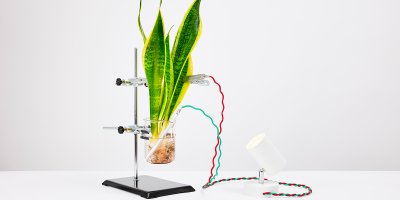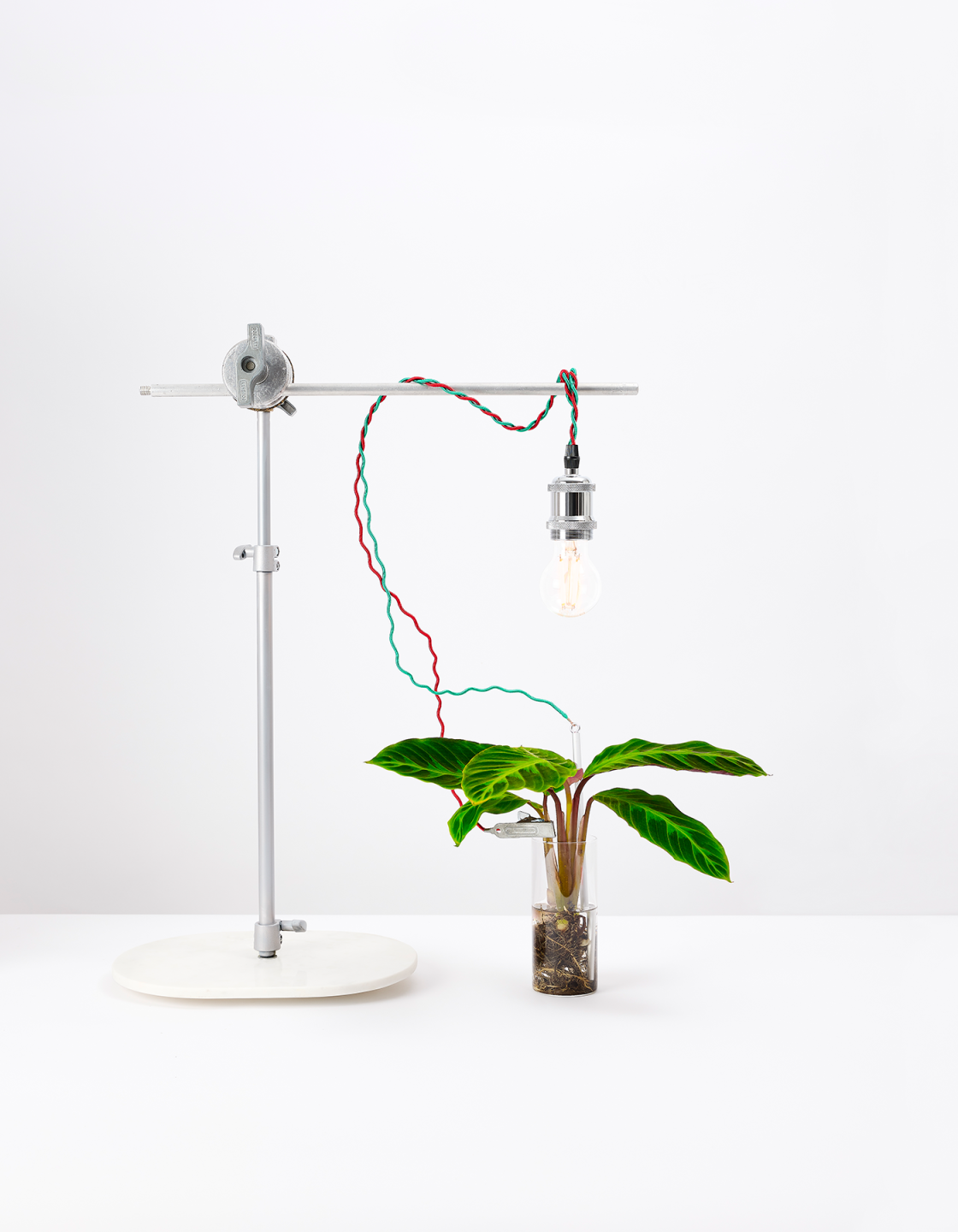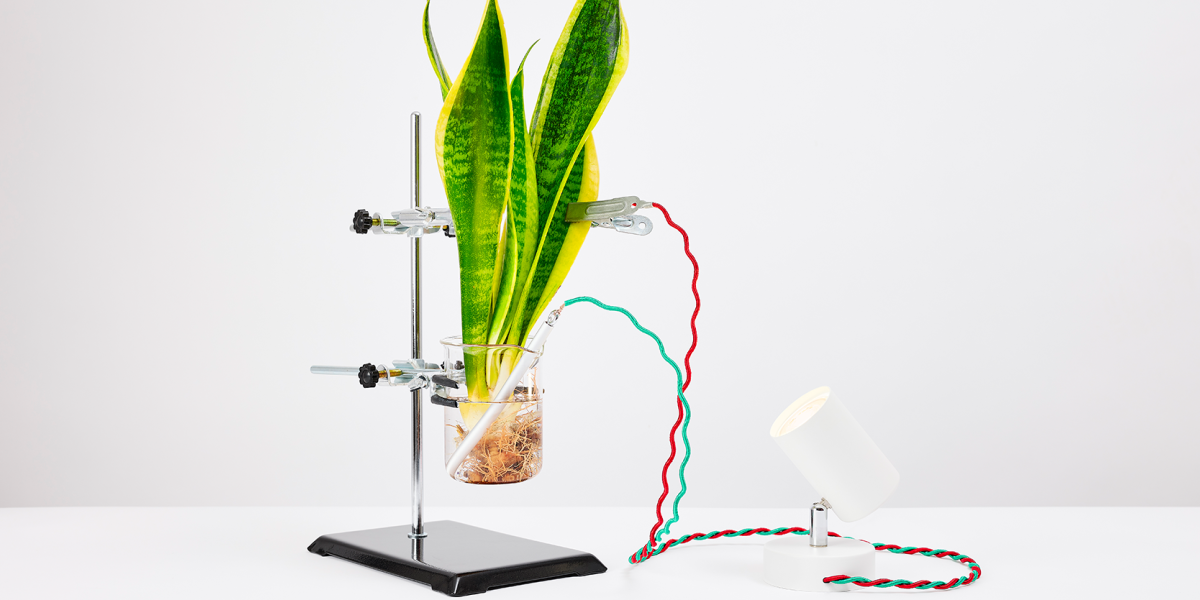Photosynthesis is a superpower. But what if we could take this ability to store light energy – the most abundant energy source on Earth – and use it directly? Is clean, photosynthesis-based plant power on the horizon?
Take some carbon dioxide and throw in a little water. Add sunlight and chlorophyll. What do you get? Oxygen, sugar… and the key to life on Earth. Photosynthesis is the plant superpower, and this ability to convert light energy – the most abundant energy source on Earth – into chemicals is what keeps us humans alive. But what if we could develop a hack that allows us to siphon off some energy from this process? Are clean energy systems that rewire photosynthesis actually such an improbable idea?
Given that energy consumption is at the heart of the climate crisis, finding ways to meet our growing demand for energy, chemicals and materials without pumping out still more carbon is crucial. Photosynthesis – in algae, cyanobacteria and plants – is not only an impressive reaction, it’s also an antidote to pollution. If our fuel sources worked the same way as plants – taking in carbon dioxide and emitting oxygen as a waste product – we wouldn’t be contending with a climate crisis.
“Photosynthesis provides the energy for 99 per cent of life on Earth,” says Zhang, who grew up in China and Australia. “It’s a process that takes light energy and stores it in molecules, more densely than in technologies such as batteries. These molecules can be transported and can release the energy later on. If we can work with nature to manipulate the electrons, then maybe we can use them as a way of generating clean energy.”
The concept of artificial photosynthesis was first proposed as early as 1912, when a forward-thinking Italian chemist, Giacomo Ciamician, suggested that fossil fuel use was unsustainable and that plant chemistry might provide a better alternative. The message took a while to catch on. But since the 1980s, attempts to create ‘artificial leaves’ have been well underway.
While some of these projects rely solely on lab-created technologies, Zhang’s lab, spanning everything from engineering and synthetic biology to electrochemistry, aims to harness the ingenuity that already exists within the natural world. Thanks to major research grants from the Biotechnology and Biological Sciences Research Council and European Research Council (ERC), it is working on biohybrid devices that blend man-made materials with biological catalysts – living cells. After all, the enzymes within living systems have evolved over billions of years precisely to enable photosynthesis. And when retained in their natural environment, all kinds of mechanisms come into play to ensure they’re repaired and sustained.
Already, collaborators of Zhang, Christopher Howe and his team have created several prototype systems that deliver bioelectricity to power microprocessors and low-power devices. Together they are now exploring the basic science behind photosynthesis, by wiring up membranes and cells to electrodes. In doing so, they can measure the electrons being emitted – a process known as exoelectrogenesis – to build up a picture of the overall health of the cell.

“Lots of people have studied the movement of electrons through enzymes, but we’re applying it directly to living photosynthetic organisms to get really analytical about what’s going on and how electrons are passing through networks of enzymes within the organisms,” says Zhang. “And we don’t focus solely on studying the biology or the electrode materials. Rather than working in silos, we are studying the exchange of electrons collaboratively and from a holistic perspective.”
Supported by the ERC grant, Zhang plans to take this research to the next level. She wants to develop better biohybrid systems, by taking the best cells and the best electrodes, discovering which work well together, and refining that process over successive iterations. As she puts it: “It’s like the way you would breed a racehorse.”
There’s a huge incentive for doing so: photosynthesis is a complex process, and many of the underlying mechanisms remain poorly understood. How do protein networks control the sunlight that enters the cell? How do cells protect themselves from light damage while harvesting what they need? We don’t entirely know.
Enough sunlight lands on the Earth’s surface every hour to meet our energy demands for a year – yet we’re nowhere near being able to harness its full potential
Most of our industrial processes rely on fossil fuel infrastructure, to the detriment of the biosphere. Biohybrid approaches, such as the one being pursued by Zhang’s team, could one day provide a much cleaner alternative, harnessing sunlight to produce complex chemicals, pharmaceuticals, fertilisers and, of course, clean fuels
It’s also surprisingly inefficient – less than one per cent of the sunlight that lands on a plant ends up being converted into chemical energy. The goal for any artificial photosynthesis project would be to improve that efficiency, effectively rewiring photosynthesis to serve our ends.
“One unanswered question is: how do photosynthetic organisms deal with all of the energy they’re absorbing from the sun?” says Zhang. “How do they make sure it goes to the right place? Sometimes there is excess energy that the cells can’t deal with, which can cause all sorts of harm and unexpected consequences for the organisms.”
Learning more about this process would not only be useful for renewable energy projects; it could also be used to improve crop yields. It could even help us understand the mechanisms behind things such as coral bleaching, which occurs when corals are stressed out by changing environmental conditions.
“Corals have micro-algae living inside them that perform photosynthesis and produce sugars,” says Loris Marcel, a PhD student in the Zhang lab. “Coral bleaching is simply the expulsion of these algae from corals. We’ve discovered that these algae can produce electrical currents, and if you measure these currents, you can get a lot of information about what’s happening in the cells – a bit like an ECG of the heart.”
A further, and somewhat unexpected, area of application could be anti-fouling – preventing bacteria from colonising surfaces where they’re not wanted. As the thinking goes: if you can develop good interfaces between bacteria and man-made materials, you should have all the information you need to design the opposite.
“In some cases, we also want to get rid of problematic cells attached to surfaces,” says Zhang. “For instance, when you have medical implants that get taken over by communities of bacteria, we can apply our knowledge about interfaces to counter that.”

But perhaps the biggest dream for researchers working within this field is the promise of a sea change within manufacturing. Right now, most of our industrial processes rely on fossil fuel infrastructure, to the detriment of the biosphere. Biohybrid approaches, such as the one being pursued by Zhang’s team, could one day provide a much cleaner alternative, harnessing sunlight to produce complex chemicals, pharmaceuticals, fertilisers and, of course, clean fuels. “One of the powers of using living organisms is that they can do all these complex chemical and biochemical processes which are really hard to do outside of a living organism,” says Dr Evan Wroe, a postdoctoral researcher in Zhang’s lab. “So if we can engineer them to produce whatever we need, then we could suddenly have a whole new industrial process.”
Some of these grander ambitions may take a while to become a reality, as there is a lag between achieving proof of concept in the lab and making a difference at an industrial scale. That said, the team has already developed small prototypes that can derive renewable energy from cyanobacteria more efficiently and directly than via traditional bioenergy routes. They are excited to continue this line of enquiry and see where it leads. For Zhang’s part, the thrill lies in the basic science as much as it does in the real-world potential: she loves to shine a light on areas that are currently shrouded in mystery.
“We’re already discovering things that we didn’t anticipate when we started,” she says. “I’m obviously hoping that we can broaden our repertoire of renewable energy technologies, as well as applying our knowledge to fields like agriculture and anti-fouling. But I’m really hoping that we get more of those unexpected delights, and delve further into the unknown unknowns.”
Every hour, enough sunlight lands on the Earth’s surface to meet our energy demands for a year, yet we’re nowhere near being able to harness its full potential. While our existing solar cells can capture and convert it, they can’t store that electricity for later use. “Things like solar cells are fantastic for performing light absorption,” says Zhang. “But biology offers the best catalysts out there. They help you make very complex molecules very selectively, in ways we can’t replicate in the lab.” By harnessing and adapting Nature’s greatest lessons, she hopes a revolution in energy generation could be within our grasp
 CAM
CAM


